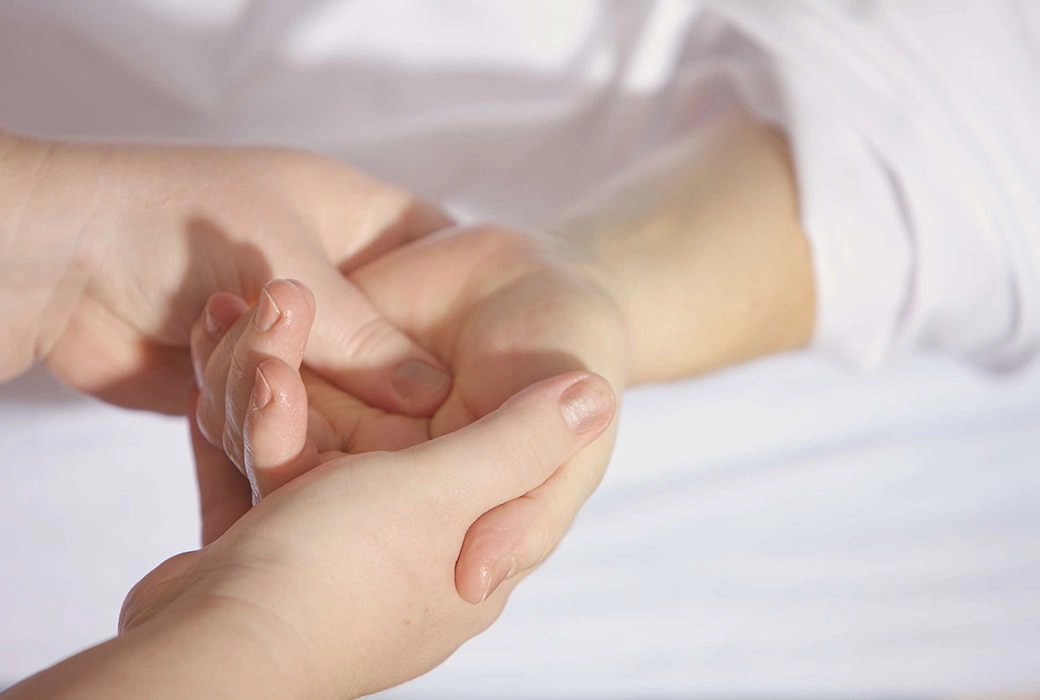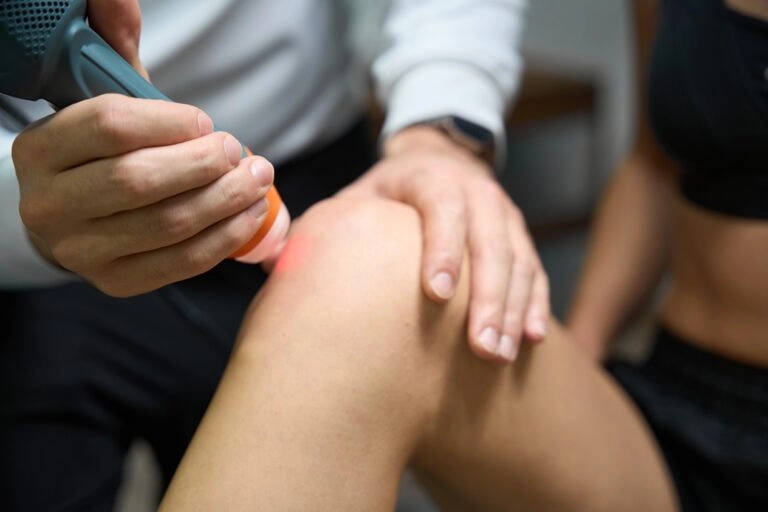“Ouch! What happened? I only picked up that book?” Hand, wrist, and forearm pain can surprise sufferers with even the silliest of actions. If not experienced before, symptoms can leave you wondering when an ‘unknown’ injury occurred. In fact, the pain may be the result of something a bit more complicated.
What Is the ‘Carpal Tunnel’ Anyway?
The term ‘carpal tunnel’ may be confusing to those who do not readily understand it functions in the body. This tunnel space is formed by eight bones and a ligament that help guard the lower portion of the median nerve. “It is a narrow passageway running from the base of the hand’s palm to just above the wrist. The “walls” of the carpal tunnel are formed by wrist and hand bones, and “the roof” is a ligament that runs lengthwise across the wrist known as the transverse carpal ligament,” reads Sports Health.
What Is Carpal Tunnel Syndrome?
Carpal Tunnel Syndrome refers to pain that is felt when the carpal tunnel ‘passageway’ shrinks, putting pressure on the median nerve it is meant to protect. Feeling is provided to this area, in part, by the median nerve. Pressure on this nerve causes pain, often bringing numbness to the area as well. Excessive strain, injury, arthritis, and repeated or unnatural bending of the wrists can produce a scenario for symptoms to develop.
Common Symptoms of Carpal Tunnel Syndrome
Symptoms are often worse in the early morning and at night. Certain tasks will also bring pain for some patients, regardless of the time of day. Patients usually say the following conditions are felt in the forearm and through the hand, excluding the little finger:
- Pain
- Numbness
- Dull aching
- Burning or tingling sensations (pins and needles)
- Weakened thumb muscles
- Pain may present itself differently on each side of the body.
Less common but more serious symptoms may also develop:
- Dry skin
- Swelling
- Skin color changes
- Atrophy at the base of the thumb (This can be more difficult to overcome than just muscle weakness.)
Three Common Causes of Carpal Tunnel Syndrome
- Fractures or injuries to the wrist bone
- Arthritic issues, including rheumatoid arthritis
- Repetitive use or strain of the wrists, hands, and fingers
Trauma to the Area
Trauma-related events causing fractures or injuries may result in a change in the way the carpal bones and the transverse carpal ligament interact with the median nerve. If the bones or ligament become deformed or marred in a vehicle accident or other injurious activity, they will need medical attention in order to heal properly.
While a break in the radius bone is a bit more common, any one of the eight small carpal bones may also break or lose their association to the carpal ligament. The wrist, hand, forearm, and possibly the upper arm will need to be considered during the healing process. Carpal tunnel symptoms may be alleviated through physical rehabilitation therapy and proper care during recovery.
Arthritis
Arthritis and carpal tunnel symptoms may often be mistaken for one another. However, it is possible for both to develop simultaneously. One key difference is that carpal tunnel pain will not be felt in the little finger, whereas, arthritis may very well be felt in this tiny digit.
As an inflammatory ailment, arthritis may cause swelling that results in carpal tunnel pain symptoms. Carpal tunnel pain may be diminished or alleviated through physical rehabilitation therapy and by working to decrease arthritis complications. A chiropractic physician can help determine which condition may be causing pain and work to eliminate the cause.
Repetitive Strain Injuries
Factory work, assembly line tasks, cycling, intense work out activities, playing the piano, and of course computer-based activities have all been blamed for causing Repetitive Strain Injuries. Tension may be caused by requiring wrists and hands to repeat the same action many times over, many days in a row. Related tasks may be surprisingly simple to complete (prior to pain developing), or each repetition may require a great amount of work.
With so many sources that may lead to an overuse of the wrists, the chance for symptoms to occur in the general public has increased. Modern job techniques often require tasks that can easily allow the wrists to become bent or overextended. Such situations may even limit blood flow through the carpal tunnel, creating a recipe for pain.
When we work and play, we often become very involved in what we are doing. We may not realize how intense we become. Into the task at hand, working hard or trying to beat a competitor, we push and push ahead until – Boom! Pain begins to strike and we notice that our shoulders have grown tense with ambition as we work. It is not intentional. It is not violent or planned. It just happens.
For Repetitive Stress Injuries, the primary course of action is to review your environment, tools, equipment, and methods used to complete tasks. Wrists should not take on excessive weight, be twisted, or bent while pushing into the palms with force or with pressure. Wrists should remain in line with the forearm and hands while completing tasks. Pain may be decreased or eliminated by altering environmental conditions, receiving physical therapy treatments, and creative planning with workspaces and resources.
Inflammation Caused by Other Conditions
The following conditions can lead to inflammation of the wrist(s) making carpal tunnel symptoms more likely to develop in some patients:
- Obesity
- Diabetes
- High blood pressure
- Excessive fluid retention (especially during pregnancy and menopause)
The Sleep Factor
Sleep habits can affect carpal tunnel pain symptoms. A poor mattress that creates pressure points may be contributing to existing conditions. If limbs are not receiving blood properly during sleep, this may affect healing or dramatically increase the risk for symptoms to develop.
Ensure that your wrists do not lose feeling while you rest. If you wake with pain or numbness in the wrists, palms, hands, or fingers, you may need to consider making a change in your sleep habits. Side sleepers are especially likely to find themselves waking on a limb that has lost feeling due to a lack of blood flow. This can easily increase pain symptoms, even overnight. A physician may also suggest wearing a brace while sleeping for some patients.
How Is Carpal Tunnel Syndrome Diagnosed?
Sensation to the little finger comes from the ulnar nerve, not the median nerve. Therefore, tests may be completed to see if the little finger has been affected by what ails a patient. A comparison of each side of the body may also be made, as it is possible for symptoms to manifest differently on each side.
A physician may want to discuss the following:
- Existing symptoms and when they were first noticed
- Tasks or actions that seem to make symptoms worse
- Sleep habits
- Any prior injuries to your hand or wrist
- Carpal tunnel pain experienced by family your members
- Other relevant conditions
An EMG test, or electromyography, may be conducted to measure muscle response in the body. This type of testing can help detect neuromuscular problems that may need attention. A physician can help decide if this is a good choice depending on your particular pain situation.
How Can I Prevent or Reverse of Carpal Tunnel Symptoms?
Carpal Tunnel pain may diminish somewhat on its own for some patients. Avoiding surgery becomes an important consideration. Here are a few things to get started with right away if you are experiencing pain in your forearms, wrists, hands, fingers, or possibly even the upper arm:
- Review any work-related conditions. Do not be hesitant to speak with a supervisor. Work environments should be safe and well managed for maximum efficiency and ensured health.
- Review your sleep habits. Sleep is meant to give the body a break from all that we put it through during the day. This is not going to happen if your body is fighting to send blood to your extremities. Be creative.
- Consider any new or old trauma-related injuries. Has proper care been given?
- Consider your exercise habits. Exercise is meant to improve health, not diminish the body’s overall well-being. Take the time to make any changes that may be needed to avoid injury.
- Consider visiting with a physician to ensure that chronic conditions do not develop. It may also be beneficial to ensure that other underlying issues are not contributing to your pain.
A physician may suggest the following nonsurgical options as a part of your care:
- Reducing strain on one or both wrists
- Using one or more wrist splints
- Steps to reduce inflammation
- Steroid Injections
- Physical Therapy
- Reviewing any underlying conditions









